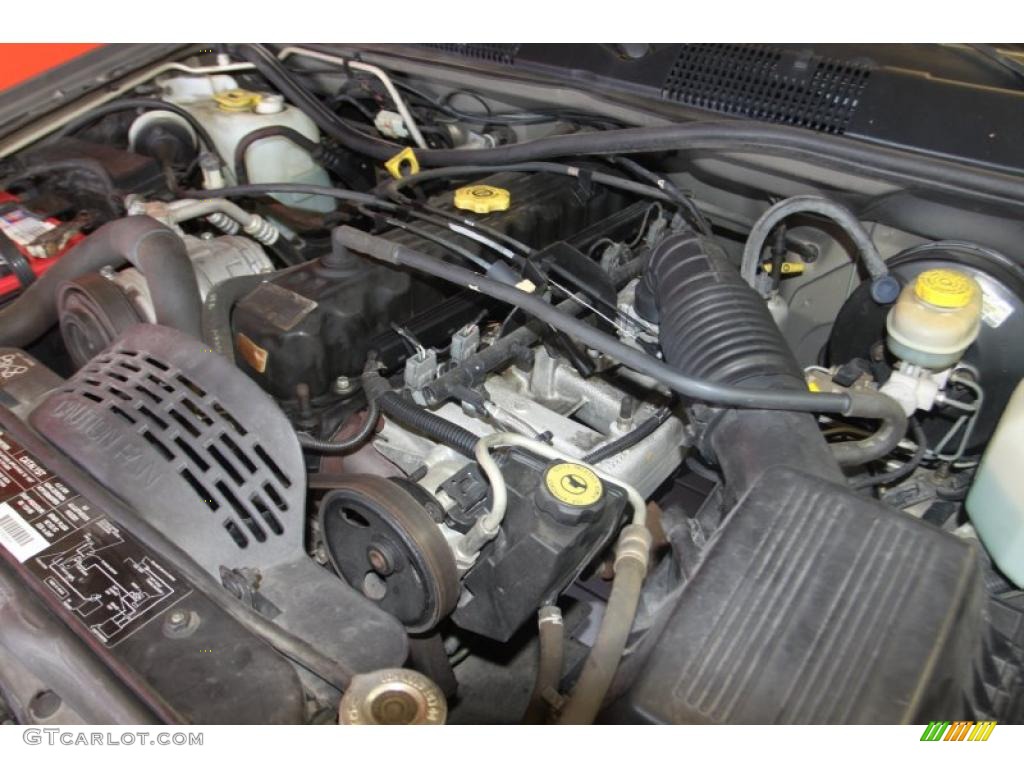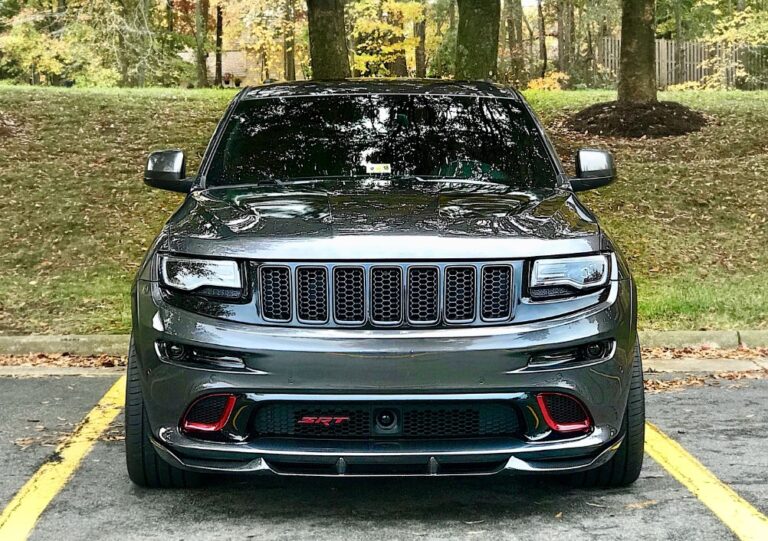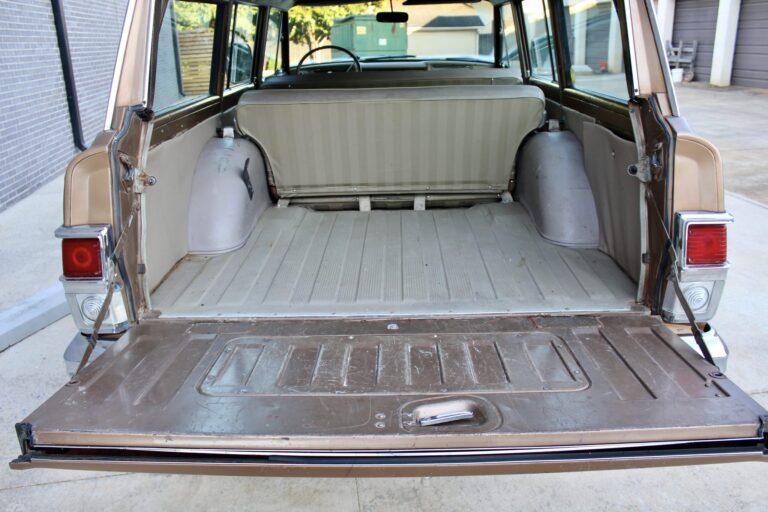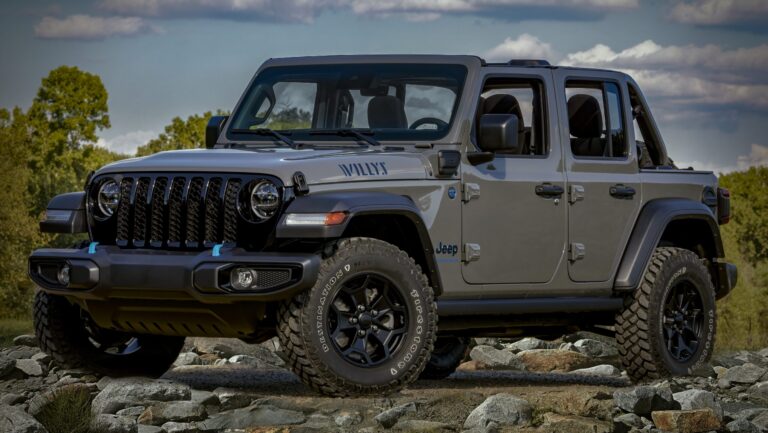1997 Jeep Grand Cherokee Engine For Sale: A Comprehensive Guide to Finding Your Replacement Powerplant
1997 Jeep Grand Cherokee Engine For Sale: A Comprehensive Guide to Finding Your Replacement Powerplant jeeps.truckstrend.com
The 1997 Jeep Grand Cherokee, a stalwart of the mid-size SUV market, holds a special place in the hearts of many enthusiasts. Known for its rugged capability, comfortable interior, and distinctive styling, it’s a vehicle that often outlives its original powertrain. When the heart of your beloved ZJ starts to falter – be it due to high mileage, a catastrophic failure, or simply the desire for renewed performance – the quest for a "1997 Jeep Grand Cherokee Engine For Sale" begins. This article serves as your definitive guide, navigating the complexities of engine replacement, offering practical advice, and ensuring you make an informed decision to get your iconic Grand Cherokee back on the road.
Why the 1997 Grand Cherokee Engine Still Matters
1997 Jeep Grand Cherokee Engine For Sale: A Comprehensive Guide to Finding Your Replacement Powerplant
The 1997 Jeep Grand Cherokee was offered with two primary engine options that year: the venerable 4.0L Inline-6 (I6) and the potent 5.2L V8. Each engine offered a unique driving experience and has garnered a reputation for its own strengths and, occasionally, weaknesses.
- The 4.0L Inline-6: This engine is legendary for its reliability and durability. Often lauded as one of the best engines ever produced by Chrysler/Jeep, it’s known for its ability to rack up hundreds of thousands of miles with proper maintenance. While not a powerhouse, its ample torque and simplicity make it ideal for off-roading and everyday commuting. Common reasons for replacement include persistent oil leaks, cracked cylinder heads (especially in earlier models, though improved by ’97), or simply extreme high mileage wear.
- The 5.2L V8: For those seeking more power and a smoother ride, the 5.2L V8 was the go-to choice. Delivering significantly more horsepower and torque than the I6, it made the Grand Cherokee a formidable towing and highway machine. While generally robust, common issues leading to replacement might include manifold leaks, oil pressure problems, or the eventual wear and tear common to any high-mileage V8.
The continued demand for these engines underscores the ZJ’s enduring appeal. For many owners, investing in a replacement engine is a more economical and sentimental choice than purchasing a new vehicle, allowing them to extend the life of a reliable and familiar companion.
Types of 1997 Jeep Grand Cherokee Engines Available for Sale
When searching for a replacement engine, you’ll encounter several categories, each with its own advantages, disadvantages, and price point. Understanding these differences is crucial for making the right choice for your budget and needs.
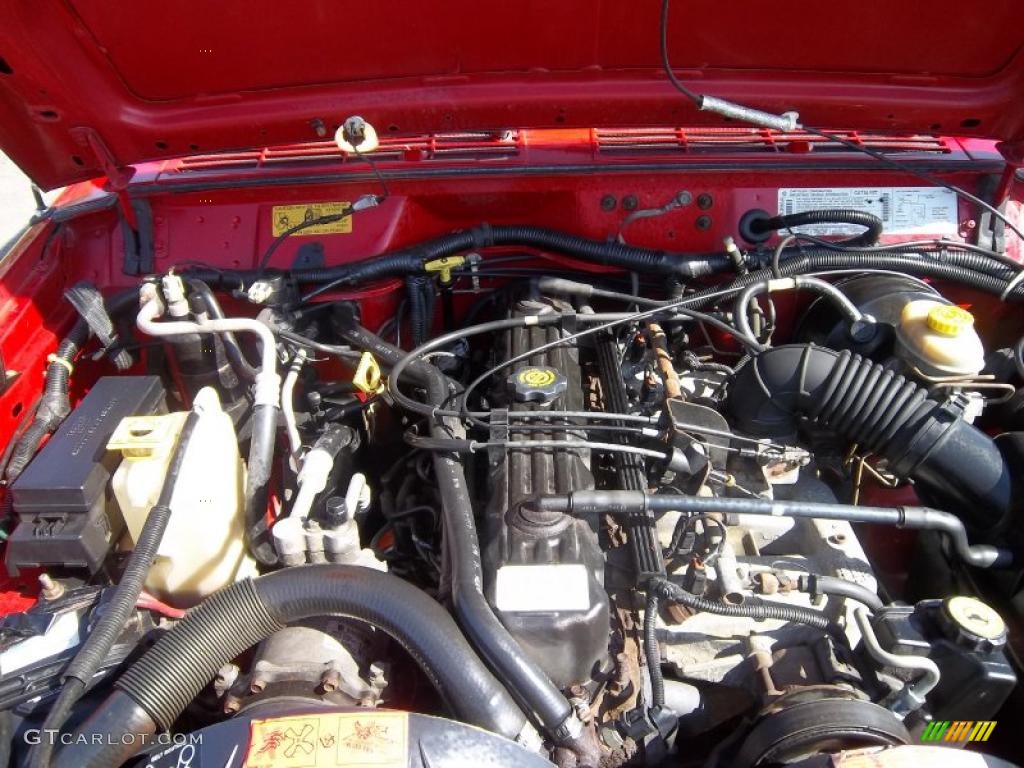
1. Used Engines (Salvage/Junk Yard Engines)
- Description: These are engines pulled directly from donor vehicles, typically from salvage yards, auto recyclers, or private sellers. Their condition varies wildly based on the donor vehicle’s history, mileage, and maintenance.
- Pros:
- Most Affordable: Generally the cheapest option, making them attractive for budget-conscious repairs or quick fixes.
- Quick Availability: Often readily available from local salvage yards.
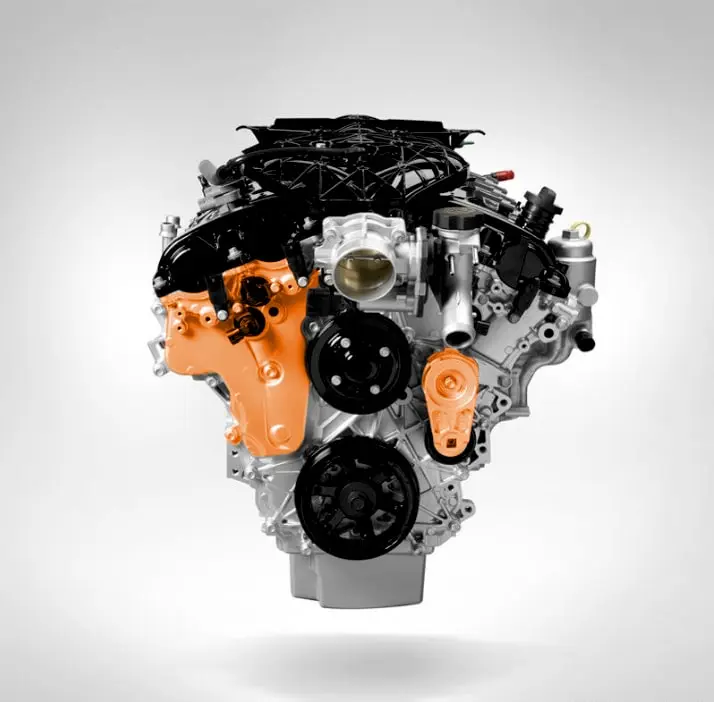
- Cons:
- Unknown History: You rarely know the true history of the engine, its maintenance, or how it was driven.
- Variable Condition: Can be a gamble; while some might be perfectly fine, others could have hidden issues that only surface after installation.
- Limited/No Warranty: Warranties are often short (30-90 days) or non-existent, covering only major internal failures and not wear items.
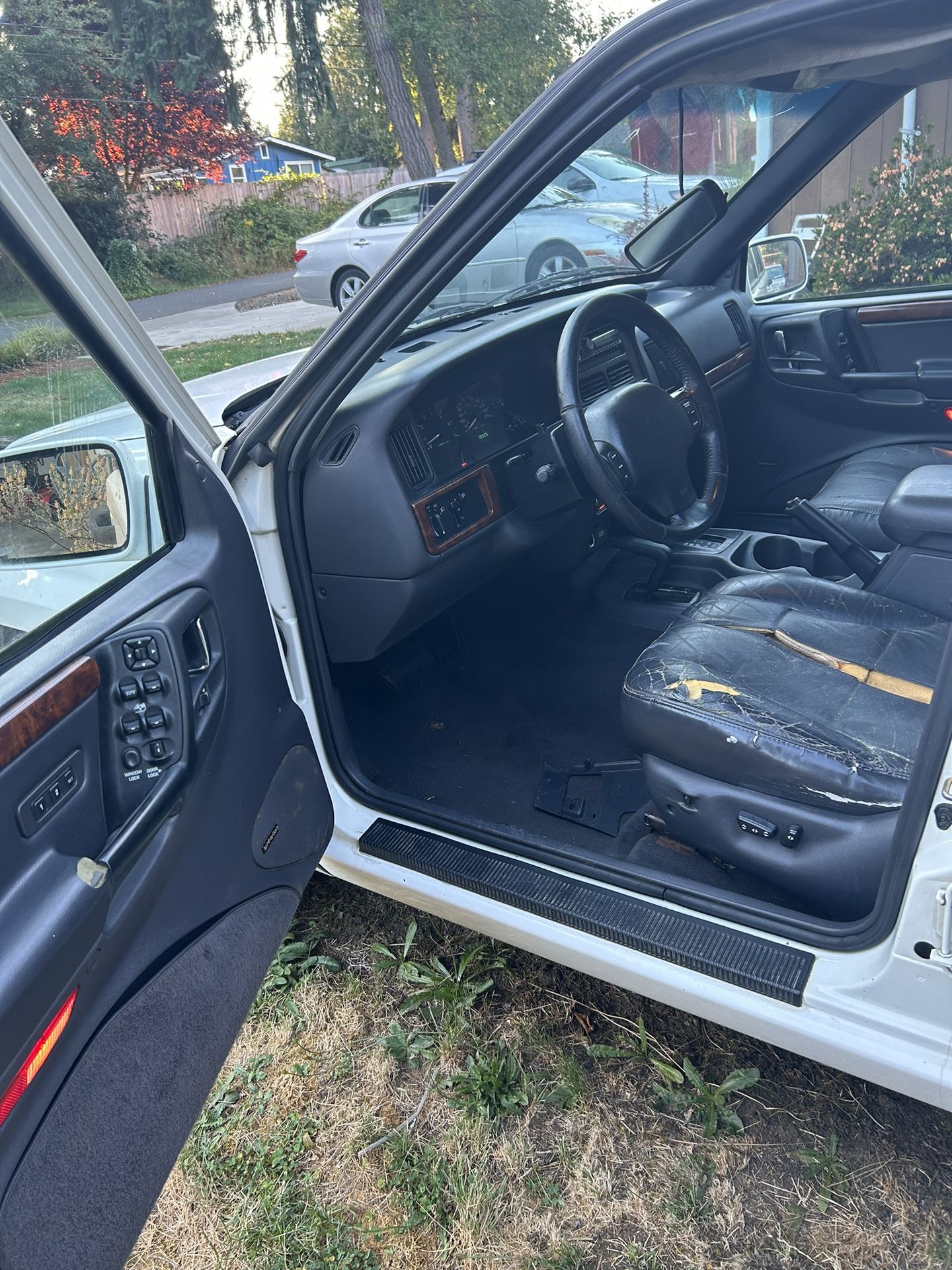
- What to Look For: Ask for the donor vehicle’s VIN, mileage, and any available maintenance records. Visually inspect for obvious leaks, cracks, or signs of neglect. If possible, perform a compression test before purchase. Check for intact accessory mounts and sensor connections.
2. Remanufactured/Rebuilt Engines
- Description: These engines have been disassembled, thoroughly inspected, cleaned, and had all worn or damaged components replaced with new or reconditioned parts. They are typically brought back to OEM specifications or better.
- Pros:
- Reliability: Significantly more reliable than used engines, as critical components are new or restored.
- Warranty: Most come with a substantial warranty (1-3 years, unlimited mileage is common), providing peace of mind.
- Performance: Should perform like a new engine, offering renewed power and efficiency.
- Cons:
- Higher Cost: More expensive than used engines, reflecting the labor and new parts involved.
- Core Charge: Usually requires a "core charge" which is refunded upon return of your old engine.
- What to Look For: Understand the scope of the rebuild (what components were replaced/machined). Inquire about the testing procedures used by the remanufacturer. Confirm warranty details in writing.
3. New Crate Engines (Rare for 1997 Models)
- Description: A brand-new engine, often from an OEM supplier or a specialized performance builder. For a 1997 Grand Cherokee, finding a brand-new, factory-spec replacement is extremely rare and usually prohibitively expensive unless it’s a custom-built performance engine.
- Pros:
- Guaranteed Quality: Brand new, no wear, full factory warranty.
- Cons:
- Most Expensive: By far the priciest option.
- Availability: Almost non-existent for a direct OEM replacement for a 1997 model year.
The Buying Process: A Step-by-Step Guide
Purchasing an engine is a significant investment. Follow these steps to ensure a smooth and successful transaction:
-
Identify Your Exact Engine: Confirm whether your Grand Cherokee has the 4.0L I6 or the 5.2L V8. The VIN (Vehicle Identification Number) can help determine the original engine, or simply look under the hood. Note any specific engine codes or variations if you’re aware of them.
-
Research Reputable Sellers:
- Online Marketplaces: Websites like eBay Motors, Car-Part.com, LKQ Online, or even local Craigslist/Facebook Marketplace can list used engines. Be cautious with private sellers.
- Specialized Engine Suppliers: Companies like Jasper Engines & Transmissions, Powertrain Products, or local engine builders specialize in remanufactured units.
- Local Salvage Yards: Visiting in person allows for direct inspection.
-
Ask Critical Questions:
- Mileage: For used engines, always ask for documented mileage.
- Donor Vehicle Info: Get the VIN of the vehicle the engine came from. This can help verify mileage and origin.
- Warranty: What is the length and coverage? Does it cover labor? What voids it? Get it in writing.
- Core Charge: If applicable, what is it, and what are the requirements for returning your old engine?
- What’s Included? Does the engine come as a "long block" (block, heads, oil pan, valve covers) or a "turn-key" (with intake, exhaust manifolds, accessories, wiring)? Clarify what accessories are attached (alternator, power steering pump, AC compressor – often these are transferred from your old engine).
- Shipping: What are the costs, estimated delivery time, and how will it be secured during transit?
-
Inspect (If Possible):
- Visual Check: Look for signs of major leaks, cracks, or impact damage. Check for corrosion.
- Fluid Condition: If fluids are still in the engine, check their color and consistency.
- Mounting Points: Ensure all mounting points are intact and not damaged.
- Compression Test: For used engines, a pre-purchase compression test is highly recommended if the seller can provide one.
-
Understand the Warranty: This is your biggest protection. A good warranty covers parts and, ideally, some labor for a significant period. Be aware of exclusions, such as overheating due to improper installation or lack of proper break-in.
-
Arrange Shipping and Delivery: Confirm the delivery address, liftgate service needs (if no forklift is available), and who is responsible for unloading. Inspect the engine immediately upon arrival for shipping damage before signing for it.
Important Considerations and Potential Challenges
- Compatibility: While a 1997 Grand Cherokee engine is specific, ensure you get the correct 4.0L or 5.2L version. Slight variations in sensor locations or accessory mounts can occur between model years, though 1997 is generally consistent. If attempting an engine swap (e.g., 4.0L to 5.2L), be aware of extensive modifications needed for wiring, ECU, transmission, and possibly drivetrain components.
- Ancillary Parts and Gaskets: A replacement engine rarely comes with everything you need. Budget for new gaskets (intake, exhaust, valve cover), seals (front and rear main), spark plugs, wires, fluids (oil, coolant), filters, and potentially a new water pump, thermostat, or hoses. It’s often wise to replace these wear items while the engine is out.
- Installation Costs: If you’re not doing a DIY installation, factor in mechanic labor costs. Engine R&R (remove and replace) can be a multi-day job. Get quotes from several reputable shops.
- Emissions Compliance: Ensure the replacement engine meets local emissions standards. This is generally not an issue if replacing with an identical engine, but swaps can complicate things.
- Break-in Period: Remanufactured engines require a specific break-in procedure (varying RPMs, avoiding heavy loads, early oil change) to seat piston rings and ensure longevity. Follow the remanufacturer’s instructions meticulously.
- Dealing with Scams: Be wary of deals that seem too good to be true. Avoid sellers who demand upfront payment via untraceable methods, refuse to provide detailed information, or offer no warranty. Use secure payment methods.
Estimated Price Table for 1997 Jeep Grand Cherokee Engines For Sale
Please note: These are estimated ranges as of late 2023/early 2024. Actual prices vary significantly based on mileage, condition, warranty, seller, and geographical location. Core charges are usually additional and refundable.
| Engine Type | Condition | Estimated Price Range (USD) | Typical Warranty | Key Considerations |
|---|---|---|---|---|
| 4.0L Inline-6 | Used (High Miles) | $500 – $1,000 | 30-90 Days | High risk, best for experienced DIYers or low-budget projects. Inspect thoroughly. |
| 4.0L Inline-6 | Used (Low Miles) | $1,000 – $1,800 | 90 Days – 6 Months | Better gamble, but still requires due diligence. Ask for VIN and test results. |
| 4.0L Inline-6 | Remanufactured | $2,200 – $3,500+ | 1-3 Years / Unlimited Miles | Best value for reliability and longevity. Comes with a core charge. |
| 5.2L V8 | Used (High Miles) | $600 – $1,200 | 30-90 Days | Similar risks to 4.0L used. V8s can have more complex issues if not maintained. |
| 5.2L V8 | Used (Low Miles) | $1,200 – $2,000 | 90 Days – 6 Months | More power, but ensure proper maintenance history. Look for signs of oil leaks or noisy lifters. |
| 5.2L V8 | Remanufactured | $2,500 – $4,000+ | 1-3 Years / Unlimited Miles | Premium option for a powerful and reliable ZJ. Essential for towing or heavy-duty use. Comes with a core charge. |
Note: Installation costs (labor) are typically not included in these engine prices and can range from $800 to $2,500+ depending on shop rates and complexity.
Frequently Asked Questions (FAQ)
Q1: What’s the main difference between a used and a remanufactured engine?
A1: A used engine is pulled directly from a donor vehicle and sold as-is, with unknown internal wear. A remanufactured engine has been completely disassembled, inspected, cleaned, and had all worn components replaced or machined to meet or exceed OEM specifications, offering much greater reliability and a comprehensive warranty.
Q2: How much does it typically cost to install a 1997 Jeep Grand Cherokee engine?
A2: Installation costs vary widely by region and mechanic, but generally range from $800 to $2,500 for labor alone. This doesn’t include the cost of the engine itself or any additional parts like gaskets, fluids, or hoses.
Q3: Can I swap a 5.2L V8 into a Grand Cherokee that originally had a 4.0L I6?
A3: Yes, it is technically possible, but it’s a significant undertaking. It requires changing the engine, transmission, engine mounts, wiring harness, Engine Control Unit (ECU), exhaust system, and potentially parts of the cooling system and fuel lines. This is not a simple bolt-in swap and should only be attempted by experienced mechanics or highly skilled DIYers with a clear understanding of the electrical and mechanical complexities.
Q4: What should I look for in an engine warranty?
A4: Look for clear terms and conditions. A good warranty covers parts and, ideally, some labor. Pay attention to the duration (e.g., 1 year, 3 years), mileage limits (unlimited mileage is best), and what specific failures are covered. Understand what actions might void the warranty (e.g., improper installation, lack of maintenance, modifications).
Q5: How long do these engines typically last after replacement?
A5: A properly installed remanufactured engine, with regular maintenance, can last as long as or even longer than the original engine did – often another 100,000 to 200,000+ miles. Used engines are more unpredictable, but a good low-mileage used engine can still provide many years of service.
Q6: Do I need to replace anything else when replacing the engine?
A6: Yes, it’s highly recommended to replace several ancillary components while the engine is out. These include all gaskets and seals (intake manifold, exhaust manifold, valve covers, oil pan, front and rear main seals), spark plugs, fluids (oil, coolant), filters, and potentially the water pump, thermostat, and engine mounts. Consider replacing the clutch (for manual transmissions) or checking the torque converter (for automatics) at this time.
Conclusion
Finding a "1997 Jeep Grand Cherokee Engine For Sale" is more than just a transaction; it’s an investment in the continued life of a beloved vehicle. Whether you opt for the cost-effectiveness of a carefully selected used engine or the peace of mind offered by a remanufactured unit, thorough research, smart questioning, and an understanding of the installation process are paramount. By following the advice outlined in this guide, you can confidently navigate the market, secure the right engine for your ZJ, and ensure your iconic Grand Cherokee continues to conquer roads and trails for years to come. Your adventure doesn’t have to end just because the engine needs a refresh; it’s merely beginning anew.
